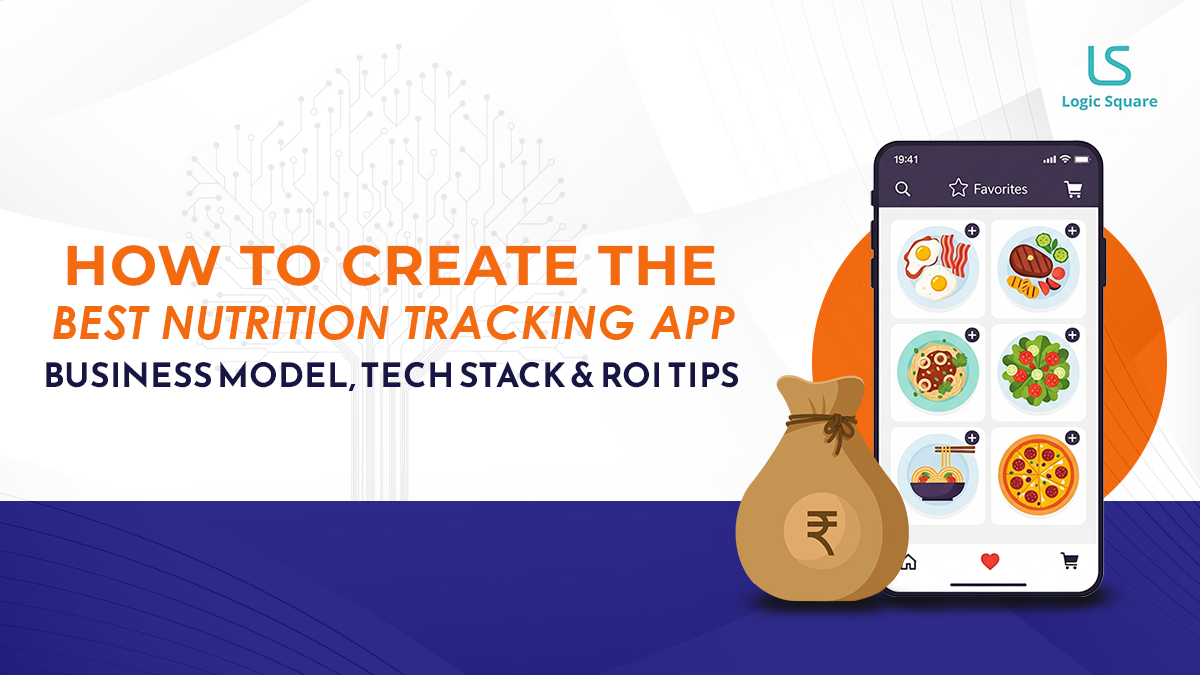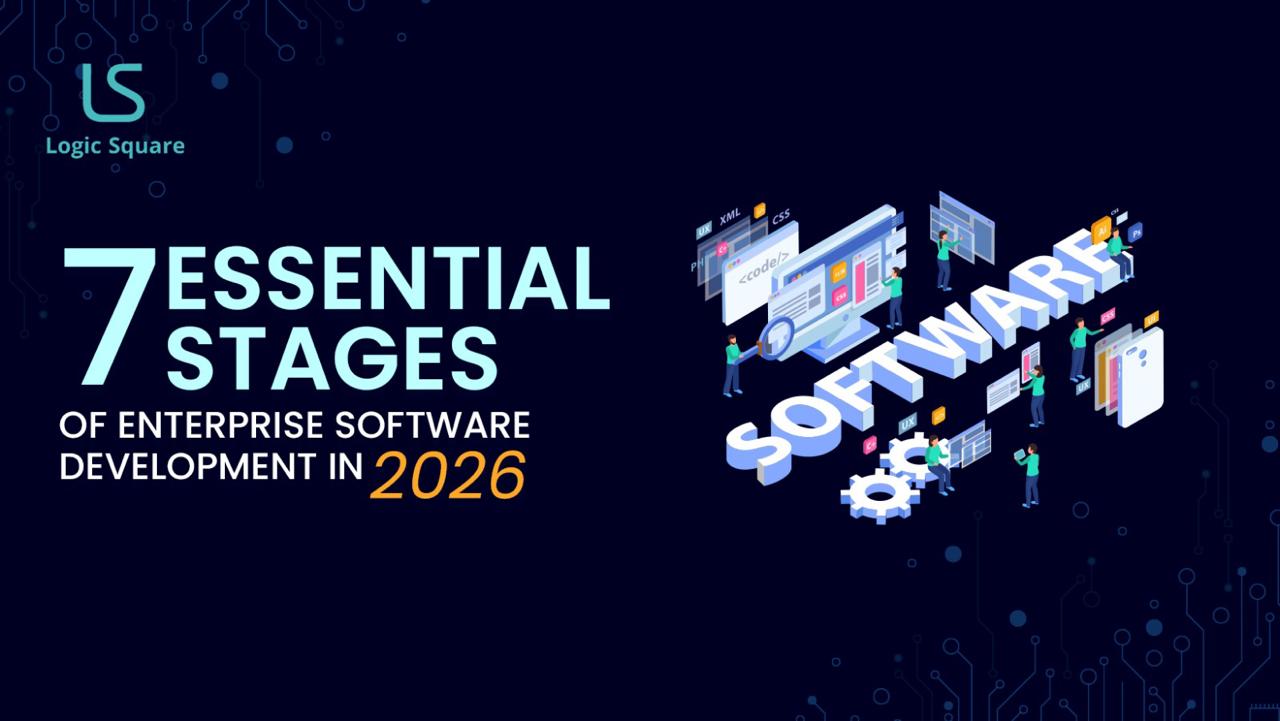Nutrition tracking apps have certainly made their presence felt in a world driven by wellness routines and fitness goals. These apps and platforms are now essential for individuals pursuing a healthier lifestyle. From counting calories to logging macros and monitoring hydration levels, a successful nutrition tracker is built and designed to integrate well with these essentials with absolute promptness and precision. However, behind every successful nutrition app lies a carefully crafted business model, a robust tech stack, and an understanding of ROI strategies.
Suppose you are a fitness startup owner, founder of a custom mobile app development company, or a health-tech entrepreneur. In that case, knowing how to build a successful nutrition tracking app can change your game. This blog will guide you through every crucial step and what it takes to make a standout product in a highly competitive market.
Table of Contents
ToggleHappy reading!
Why Nutrition Tracking Apps Are Booming
The digital health market is projected to surpass $500 billion by 2027 globally. Also, as a matter of fact, nutrition tracking is said to be one of the fastest-growing segments within this domain. Wondering what factors are fuelling this surge currently?
Here’s everything you need to know.
- A growing number of personalized diet and fitness plans.
- An increased health-awareness concerns and drives post-pandemic.
- The integration of wearables and Artificial Intelligence.
- A global surge in smartphone penetration.
This signals a prime opportunity for software development companies and entrepreneurs to invest in apps that do more than track food – they offer behavior-changing insights and seamless user experiences.
So, without much ado, let’s delve deeper into the context and find out how to roll out the best nutrition tracking app like a boss.
Step 1: Define Your Business Model
Even before you write a single line of code, you must define how your app will function and generate the desired revenue. Several successful nutrition apps offer hybrid models with a mix of free access and premium features.
Here are some common monetization strategies for you to consider.
- Freemium Model Allow your users to access basic features free of charge, with advanced functionalities like AI-powered meal suggestions or fitness integrations locked behind a subscription.
- Subscription Based You can offer monthly or annual subscription plans for full access. This works for apps that target committed users, such as patients with medical needs, dieters, and athletes.
- Ads & Affiliate Marketing You can also partner with health brands, food delivery services, or supplement companies. If you tastefully execute affiliate marketing and in-app ads, you can provide passive income, just as you like it.
- B2B Partnerships How about building an enterprise version of your app that fitness centers, insurance companies, and dietitians can offer to their customers? Sounds like a plan?
Connecting with a trusted custom mobile app development company can help analyse market trends, and choose a revenue model that aligns well with your product goals and user behvaior.
Step 2: Key Features Your Nutrition App Must Have
Your app’s core features determine its usefulness and engagement. Thus, to stand out, you must go beyond just logging food.
Here’s what you need.
Basic Features
- Food Database : Extensive and searchable, with nutritional details
- Barcode Scanner : Makes logging packaged food easier
- Meal Planning : Based on dietary goals or restrictions
- Calorie & Macronutrient Tracker : Helps users monitor intake
- Progress Dashboard : Visualize changes over time
- Reminders & Notifications : Prompt regular usage
Advanced Features
- AI-Powered Recommendations : Personalized meal suggestions based on user history
- Wearable Integration : Sync with Apple Watch, Fitbit, etc.
- Water Intake Tracker : Monitor daily hydration levels with reminders and personalized goals.
- Community & Social Sharing : Enable challenges, tips, and peer support
- Gamification : Use badges, streaks, or leaderboards to boost retention
Remember, the more intuitive your UI is, the better the user retention. Connecting with a reliable software development company experienced in UI/UX design can ensure your app features are useful and enjoyable for your users down the road.
Step 3: Choose the Right Tech Stack
Your tech stack must be on par with scalability, performance, and time-to-market goals per trends. Here’s a recommended stack for you to get started with.
Front-End
- React Native or Flutter : For cross-platform mobile development.
- Swift (iOS) and Kotlin (Android) : For native apps, if performance is a priority.
Back-End
- Node.js or Python (Django/Flask) : Fast and flexible
- Firebase : Real-time sync, easy to use, and scalable
- AWS or Google Cloud : Cloud storage, security, and scalability
AI/ML (For Smart Features) :
- TensorFlow Lite or Core ML : For on-device ML integration
- OpenAI APIs : For intelligent meal recommendations, natural language food logging, etc.
Database
- PostgreSQL : For structured data
- MongoDB : For unstructured user input like notes or photos
If you are wondering how to get things rolling, connect with an experienced custom mobile app development company like Logic-Square. We will help you tailor your stack based on your app’s complexity, feature list, and scalability needs.
Step 4: Privacy & Compliance
While handling sensitive health data, make sure they are compliant with major privacy laws.
- HIPAA (U.S.)
- GDPR (Europe)
- CCPA (California)
The idea is to implement end-to-end encryption, anonymous user data, and allow users full control over their data. Now that you are wondering how to get things rolling in the right direction, connecting with a reliable software development company like Logic-Square with a background in health tech can be a great idea. Our team can help you navigate these regulations from day one.
Step 5: User Acquisition & Retention Strategy
Building the app is half the journey; growing its user base is where the real challenge lies.
Acquisition Channels
- Influencer Marketing: Fitness and wellness influencers are trusted voices
- Content Marketing: SEO-friendly blogs, recipes, and health tips
- App Store Optimization (ASO): Use high-volume keywords and positive reviews
Retention Strategies
- Push Notifications: Reminders tailored to user goals
- Weekly Progress Emails: Recap goals and suggest improvements
- In-App Challenges: Daily or weekly challenges to keep users engaged
The key is personalization. Use data to offer actionable insights and encourage healthy habits.
Step 6: Measure ROI and Optimize
Once your app is live, track metrics that reflect user value and app health. Here’s what to focus on:
Key ROI Metrics
- Customer Lifetime Value (CLTV)
- Monthly Active Users (MAU)
- Churn Rate
- Average Revenue Per User (ARPU)
- User Engagement (session length, daily usage)
Gather and interpret data using Mixpanel, Amplitude, or Firebase analytics tools. Then, work with a custom mobile app development company like us to iterate quickly based on these insights, whether improving the UI, adding a new feature, or refining the onboarding process.
Future Trends to Watch
The wellness tech space is evolving fast. It’s quintessentially important for you to keep up with the latest trends and embrace what’s new and hot. Here’s what’s on the horizon:
- AI Diet Coaches: Conversational agents that offer real-time nutrition advice
- Augmented Reality (AR): Visualize portion sizes or food labels
- DNA-Based Diet Plans: Personalized diets based on genetic markers
- Voice-Enabled Logging: Using smart assistants like Siri or Alexa
A future-ready app will be adaptable. Partnering with a software development company that keeps up with emerging tech trends ensures your product doesn’t become obsolete in two years.
Here’s how we can help.
Turning Vision into a Scalable App
Creating a top-performing nutrition tracking app requires more than just good design. It demands strategy, compliance, innovation, and user empathy. With the right business model, tech stack, and ROI metrics, your app can enter and dominate the market.
If you’re ready to build a nutrition app that users love and investors support, collaborating with Logic-Square can streamline your journey from idea to App Store success.
And if you’re a software development company looking to expand your health-tech portfolio, now’s the perfect time to dive into this lucrative space.
After all, the future of wellness is digital, and the smartest apps will lead the way.
Let’s connect and determine a rewarding journey down the road, together!





